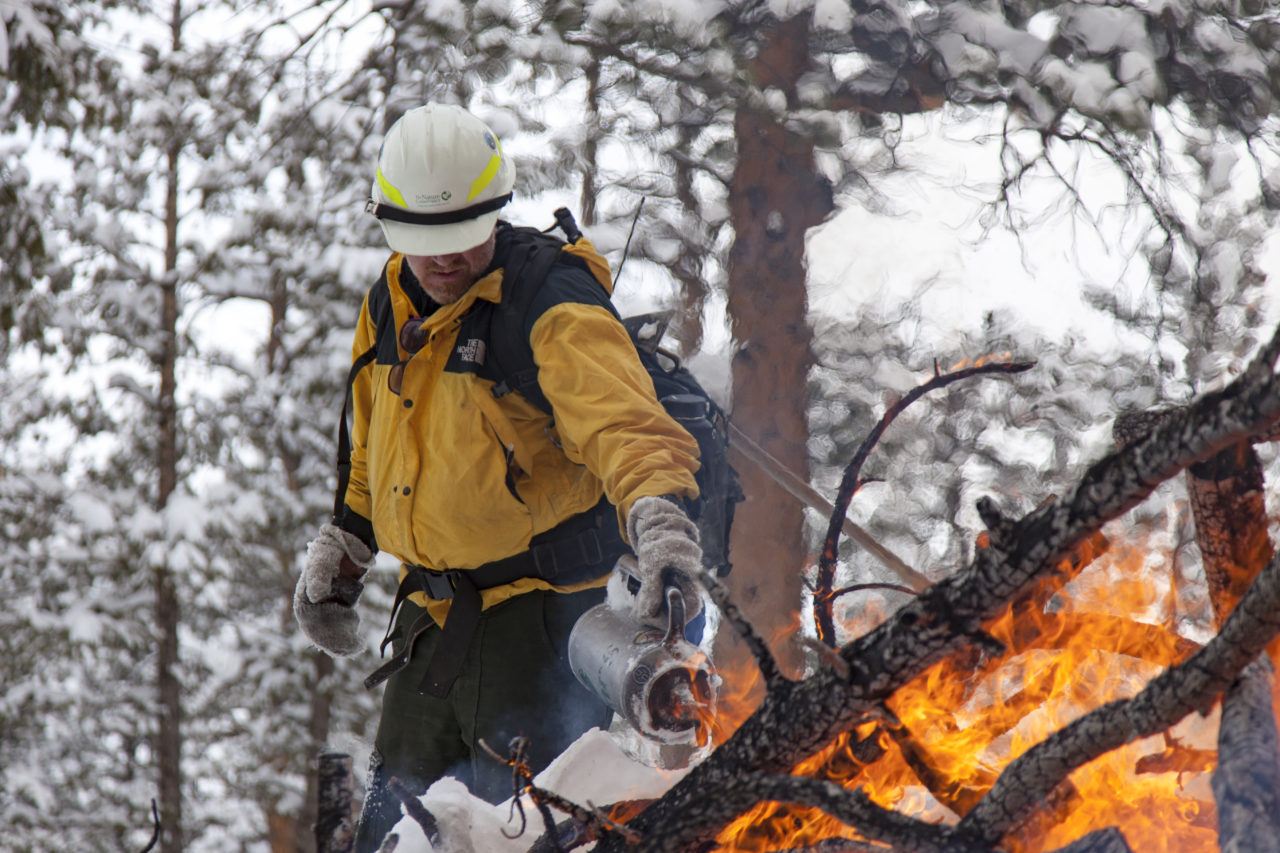After several years of planning, the Northern Colorado Fireshed Collaborative (NCFC) is officially launching to help make forests more resilient, to protect communities and keep precious water supplies reliable. The group will continue to work to address wildfire risk through strategic and coordinated cross-boundary forest and fire management on Colorado’s northern Front Range. The NCFC’s vision is that landscapes across northern Colorado can support wildfires without causing long-term damage to watersheds and the communities they serve. To achieve this vision, the NCFC’s mission is to increase the pace and scale of not only fuels reduction treatments (mechanical/hand thinning and pile burning), but also prescribed fire and strategically managed wildland fires across jurisdictional boundaries.
“We live in a fire-dependent landscape, but years of suppressing fires has left us with unhealthy forests that can fuel large, high-intensity wildfires like we saw in 2020,” said Ch’aska Huayhuaca, NCFC’s Coordinator and a Research Associate at the Colorado Forest Restoration Institute. “Prescribed fire is an important forest restoration tool that leverages a natural process to help foster ecosystem health and decrease fire risk to communities.”
By planning and implementing collaboratively across federal, state, county, and private lands, NCFC will increase the effectiveness of wildfire mitigation treatments and improve watershed protection outcomes. Within the first five years, the NCFC plans to treat 20% of the strategic, priority areas they have identified using a combination of mechanical, manual and managed fire methods. The location and size of treatments will be sufficient to reduce the risk of large contiguous areas of severe fire.
“A Fireshed is an area where social and ecological concerns regarding wildfire overlap and are intertwined,” explains Jen Kovecses, Executive Director of the Coalition for the Poudre River Watershed and a member of the NCFC. “Wildfire operates at a large scale that connects the high country with downstream communities and resources. We need to think and act at the scale of a wildfire – at a ‘fireshed’-scale – if we are going to successfully bring fire back into our watershed management toolbox.”
The NCFC is made up of representatives from federal, state and local natural resource agencies, non-profits, community groups, and researchers. Partners include the U.S. Forest Service, Colorado Forest Restoration Institute, The Nature Conservancy, City of Fort Collins, City of Greeley, Fort Collins and Big Thompson Conservation Districts, Coalition for the Poudre River Watershed, Big Thompson Watershed Coalition, Boulder Watershed Collective, Estes Valley Watershed Coalition, Lefthand Watershed Center, The Ember Alliance, Forest Stewards Guild, Larimer County, Colorado State Forest Service, Natural Resource Conservation Services, Peaks to People Water Fund and Rocky Mountain Research Station.
“The knowledge, experience and passion of the partners within NCFC are making it possible to change how wildfire impacts the forests of northern Colorado,” Arapaho and Roosevelt National Forests and Pawnee National Grassland Forest Supervisor Monte Williams said. “The unprecedented fires of 2020 illustrated that wildfire knows no boundaries and we must implement our work in the same manner. We must improve the health of our forests so they can experience fire without the damaging impacts we saw last year.”
The Northern Colorado Fireshed Collaborative (NCFC) is working to increase the pace and scale of mechanical fuel reduction methods, controlled burns and strategically managed wildland fires across jurisdictional boundaries. To learn more please visit www.nocofireshed.org.
Attached photo caption: A crew member works to burn slash piles resulting from fuels reduction projects within the Elkhorn Creek area of the Roosevelt National Forest. The NCFC will implement fuel reduction treatments and prescribed fire to help make forests more resilient, to protect communities and keep precious water supplies reliable. (Photo credit: Evan Barrientos)

